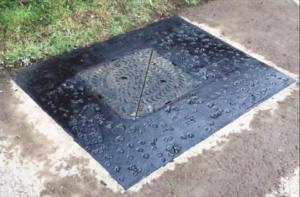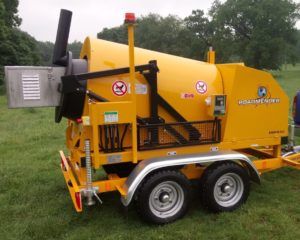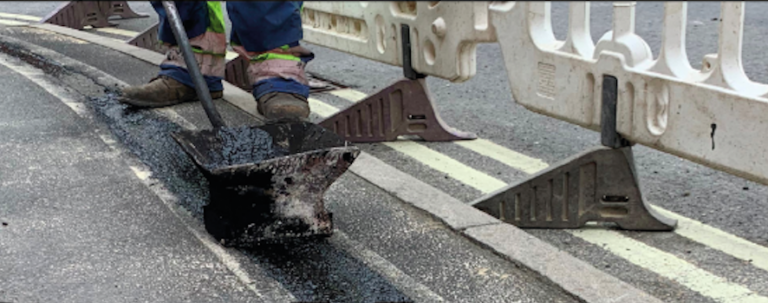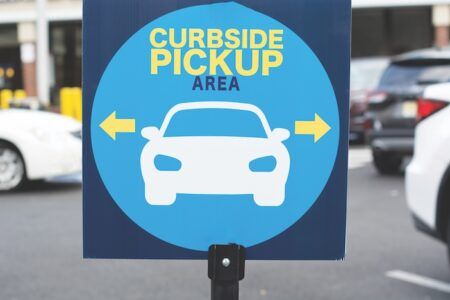Global Market Insights’, Sunil Kumar Jha, explores the diverse areas of the traffic and mobility industry that radar technology is benefiting.
The automotive industry is witnessing a seismic shift, underscored by a slew of developments in remote sensing and communication technologies. Automobiles are being developed to provide seamless experience by reducing congestion, augmenting efficiency and bolstering safety. Notably, the National Highway Traffic Safety Administration (NHTSA) in its 2016 report stated that 20 automakers comprising over 99% of the U.S. auto market have pledged to make automatic emergency braking (AEB) a standard feature on almost all new cars by 2022.
State-of-the-art vehicles designed to navigate traffic safely and sense the surroundings are being developed to reduce vulnerabilities put forth by human errors. This has led to radar systems becoming a pivotal technology of modern vehicle safety & comfort. With the advent of accident-free and autonomous driving vision, automotive radar sensors have gained prominence in current and next-gen advanced driver assistance systems (ADAS).
Compared to other sensor technologies, radar is robust and seamless in hostile conditions such as bad weather, extreme temperatures, and bad light. With the innate ability to spot dynamic and stationery objects in the vicinity, automotive radar systems tend to detect the position of the car in the vicinity, along with its trajectory and speed.
Of late, there has been palpable surge in the use of radar for sensing the environment in automotive applications to offer data for applications such as adaptive cruise control systems (ACC). Adaptive cruise control, also known as intelligent cruise control, tends to automatically control the braking and acceleration of a vehicle based on what other cars are doing around it. Even though it was found only in luxury car models owing to high production cost, ACC has made inroads in entry level models and have become a standard feature in new vehicles today.
Some automakers have started bundling the capacity of ACC with systems which can brake a car to a full stop, or provide a limited amount of automated steering, keeping the car centered in its lane. Sensors such as radars deployed in adaptive cruise control systems have become paramount to autonomous cars and ACC has begun the process of automating parts of driving.
 What makes parking assistance so attractive amongst potential customers?
What makes parking assistance so attractive amongst potential customers?
At the time when customers struggle with parallel parking, parking assistance has come up through the ranks to boost the demand for automotive radar systems. Parking assistance uses sensors that are placed around the vehicle to ward off any chance of hitting any objects in the vicinity. Soaring palpability towards parking sensors is mainly attributed to their innate capability of not only helping drivers averse the hassle of parallel parking, but also helping minimize dings and scratches that can get on the vehicles.
With Drivers Assistance Systems unraveling the way for automated driving, leading companies such as Bosch have been using ultrasonic sensors to detect distances to hurdles and aptly monitor the space during maneuvering and parking. Parking assistance system has set the tone in automotive industry and the trend is expected to have a commendable influence on the landscape.
The trend of smart parking solutions and technologies has helped push the demand for parking assistance further. The use of ultrasonic sensors is preferably attributed to its precision and effectiveness. Prominently, automakers have exhibited profound inclination towards smart parking sensors, especially ultrasonic sensors given that the accuracy of their detection is quite high, and they cost low.
Automobile manufacturers have shown traction towards blind spot detection radars which often use the multi-frequency shift keying radar signal and function preferably in 24 GHz. Blind spot detection radars use image sensors or ultrasonic to keep an eye on a vehicle’s blind spots and caution the driver when other vehicles are present.
Popularity of blind spot detection has lot to do with the trend for advanced driver assistance systems (ADAS). Leading automakers have blind spot information system up their sleeves. Blind spot intervention system not only alerts the driver of the vehicles’ presence in the vicinity, the advanced system also offers resistance in the steering provided the driver tries to shun the warning.
With respect to the range of sensing the objects, short range radar (SRR) sensors are being used in vehicle’s two rear corners to fit in with ADAS features such as parking assistance, blind spot detection, cross traffic alerts, among others.
It is worth mentioning that mid and long range radar (LRR) sensors function in 76-81 GHz and are used for adaptive cruise control (ACC) technologies and automatic emergency braking systems (AEBS). It has been observed that LRR uses 77 GHz that provides better resolution and better accuracy and they are profoundly being used to measure the speed of and distance to other vehicles and spot objects.
 Traction towards 77 GHz frequency is becoming more noticeable
Traction towards 77 GHz frequency is becoming more noticeable
Vehicular radar manufacturers are gradually moving from 24 GHz to 77 GHz on the heels of regulations put forth by agencies such as US Federal Communications Commission (FCC) and European Telecommunications Standards Institute (ETSI). Strikingly, the 24 GHz frequency range will not be available for a bandwidth of 5 GHz, called as Ultra-Wideband (UWB) for automotive applications beyond 2022 as mandated by FCC and ETSI.
With innovations galore, prominent companies and startups are bolstering their product portfolios. Some of the major innovations that can redefine the industry outlook are 4D radars and radar detecting road conditions.
Even though radar systems surmount the drawbacks faced in Lidar and camera, radar tends to have low resolution. However, emergence of 4D imaging radars has seemingly overcome the hurdle of resolution. 4D imaging radars have the capability of classifying objects in high-resolution and can capture objects both in azimuth and in the elevation. It is widely perceived that the trend for 4D imaging radars is likely to boost the production of autonomous vehicles.
Some of the prominent companies in automotive radar market are Robert Bosch, Fujitsu, Continental, and Valeo, among others.
- In 2017, Bosch, German auto supplier, collaborated with TomTom to create an HD map with integrated Radar Road Signature layer, thereby fueling localization of vehicles. The technology is helping automated vehicles determine their precise locations.
- Valeo, a leading automotive supplier, has recently (January 2020) joined hands with Hyundai and Hexagon to reveal a high-precision vehicle position system to boost road safety. High-precision positioning (HPP) system is said to improve vehicle’s advanced active safety technologies.
- In what looked as a highly anticipated deal, Continental entered into a Joint Venture with Nexteer Automotive in 2017 to develop actuator and motion control systems for automated driving. The JV has brought together advanced breaking technologies and automated driving of Continental and ADAS technologies of Nexteer to boost vehicle motion control systems.
- Automotive radar industry received a major boost after the news regarding development of millimeter-wave CMOS security for automotive radar surfaced in Q4 2016. Fujitsu developed CMOS-based millimeter-wave signal generator that can modulate frequencies across band of 76-81 GHz. The technology has helped drivers prevent detection errors with the help of automotive radar.
Follow us on twitter @TrafficTechMag






